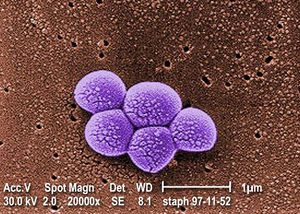A probiotic in Kombucha products (Bacillus coagulans) and its effects on the gut microbiome.
General Background

By Elsie Groebner
Several “health foods” have recently emerged as the demand for “healthy alternatives” to popular foods is increasing. One popular health drink that has emerged is Kombucha, which is a fermented tea. Kombucha products make claims like consumption helps maintain a “healthy gut”. Kombucha contains billions of probiotics, which are live bacteria and yeasts that appear to have health benefits in the human body. Probiotics may help the body have a healthy balanced level of live microorganisms. The major probiotic in kombucha products appear to be Bacillus coagulans, but several other bacteria capable of fermentation are found in kombucha as well. Lactobacillus nagelii, Gluconacetobacter, Gluconobacter, and Komagataeibacter are other strains of probiotics that are found in kombucha.
The insertion code consists of:
Double brackets: [[
Filename: PHIL_1181_lores.jpg
Thumbnail status: |thumb|
Pixel size: |300px|
Placement on page: |right|
Legend/credit: Magnified 20,000X, this colorized scanning electron micrograph (SEM) depicts a grouping of methicillin resistant Staphylococcus aureus (MRSA) bacteria. Photo credit: CDC. Every image requires a link to the source.
Closed double brackets: ]]
Other examples:
Bold
Italic
Subscript: H2O
Superscript: Fe3+
<ref name= ab> [Vargas, B.K., Fabricio, M.F. and Ayub, M.A.Z., 2021. Health effects and probiotic and prebiotic potential of Kombucha: A bibliometric and systematic review. Food Bioscience, 44, p.101332.]
A citation code consists of a hyperlinked reference within "ref" begin and end codes.
To repeat the citation for other statements, the reference needs to have a names: "<ref name=aa>"
The repeated citation works like this, with a forward slash.[1]
Section 1
Include some current research, with at least one figure showing data.
Every point of information REQUIRES CITATION using the citation tool shown above.
Section 2
Include some current research, with at least one figure showing data.
Section 3
Include some current research, with at least one figure showing data.
Section 4
Conclusion
References
Authored for BIOL 238 Microbiology, taught by Joan Slonczewski,at Kenyon College,2024
